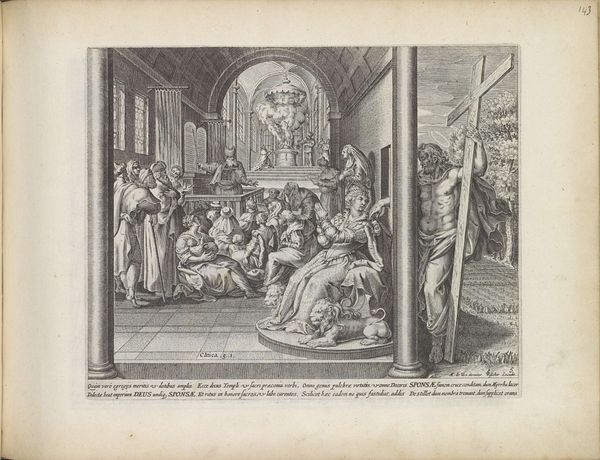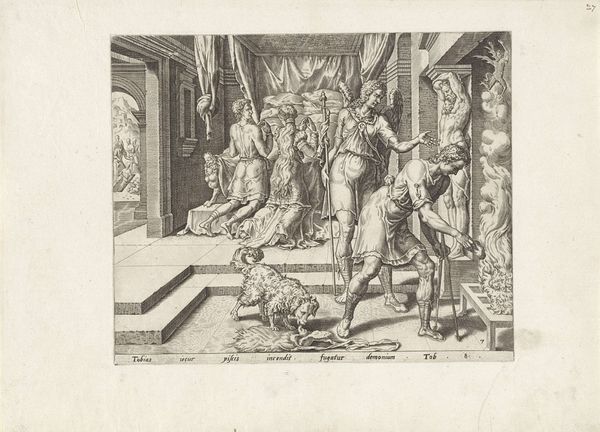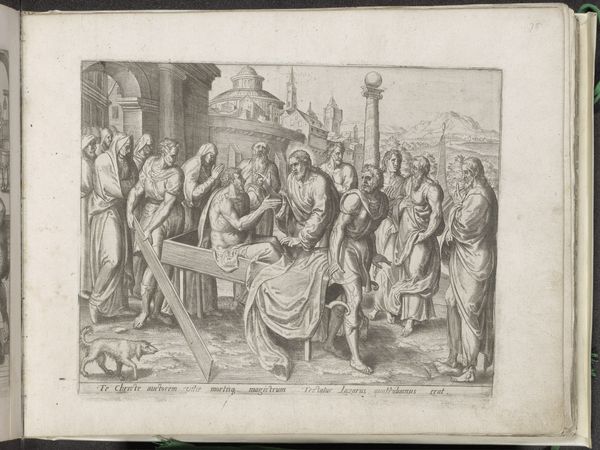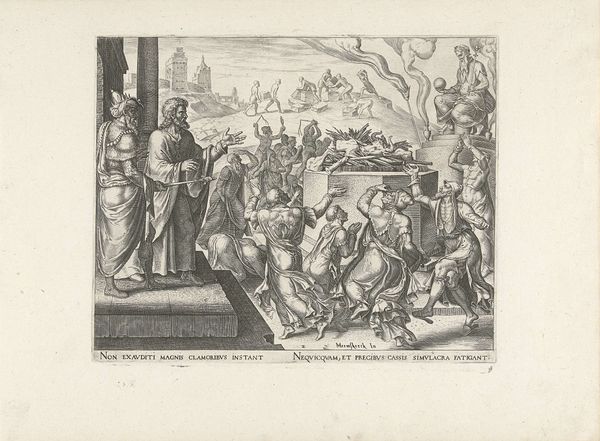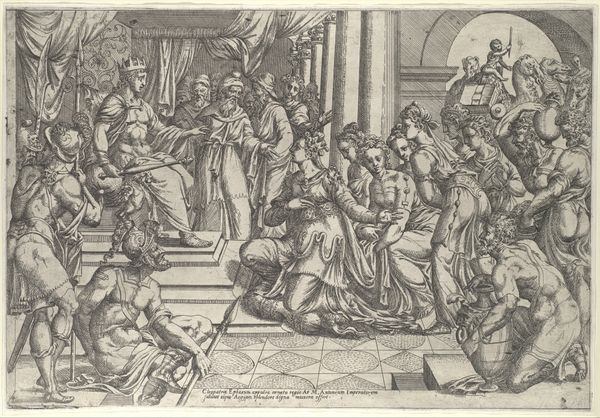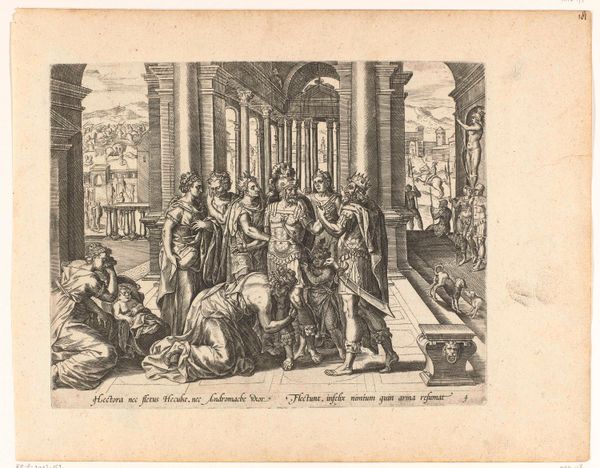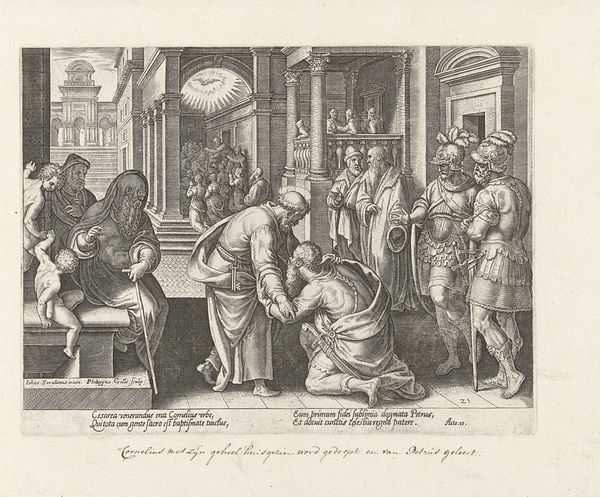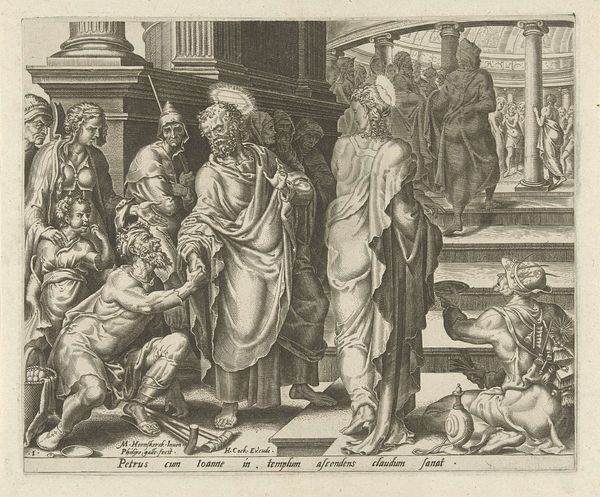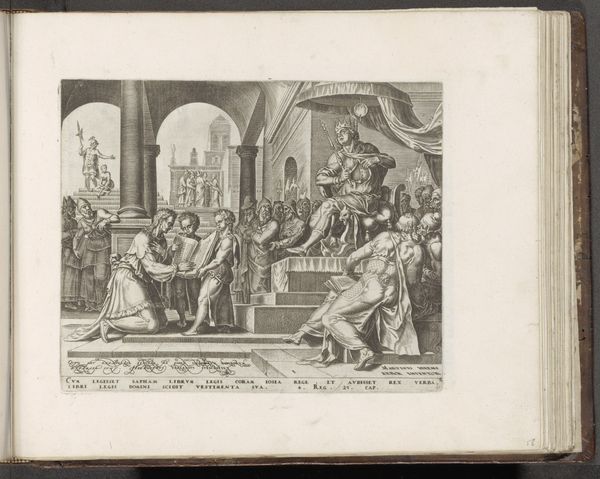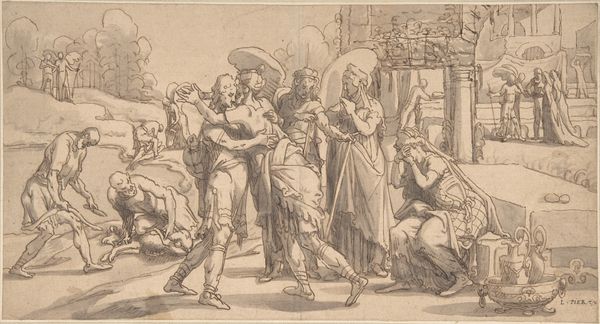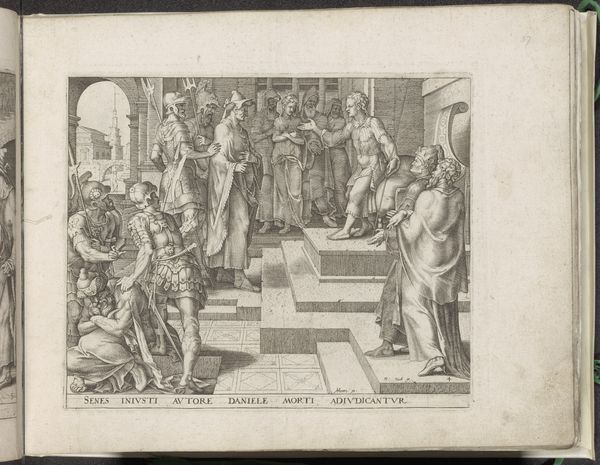
print, paper, engraving
#
narrative-art
# print
#
figuration
#
paper
#
11_renaissance
#
line
#
history-painting
#
northern-renaissance
#
engraving
Dimensions: height 205 mm, width 245 mm
Copyright: Rijks Museum: Open Domain
Editor: This is "Petrus en Johannes worden gevangen genomen," or "Peter and John being imprisoned," an engraving on paper by Philips Galle from 1558. It feels incredibly tense, so many figures packed into a tight space, and all these severe faces… What strikes you about this work? Curator: It's interesting you pick up on that tension. Looking at it through a contemporary lens, I see Galle grappling with themes of authority and resistance, ideas central to the Reformation, wouldn't you agree? The capture of Peter and John, early leaders of a marginalized religious movement, highlights the power dynamics at play, between the established religious authorities and those challenging the status quo. Editor: That makes a lot of sense! I was focused on the expressions of the figures, but framing it within the Reformation shifts my perspective entirely. How do you think Galle, working during that period, navigates those complex political and religious sentiments? Curator: Consider the print’s visual language – the meticulous detail, the theatrical staging, which pull from both Italian and Northern European traditions. Galle is crafting a narrative. A narrative of persecution and righteousness. Note how Peter and John stand illuminated amidst a throng of figures rendered with a distinct level of agitation. It hints at the righteousness of their cause and subtly critiques the actions of their captors. Editor: It’s so interesting how a work rooted in religious narrative speaks to broader concerns about social justice. Curator: Exactly! It reminds us that these historical events and artistic representations are never just about the past; they offer powerful allegories for contemporary struggles against oppression. Now, considering the work is an engraving, how accessible might it have been? What do you think this could say about Galle's intention of this work? Editor: Thinking about that, a print would have made it quite accessible... Perhaps Galle aimed to disseminate this narrative, stoking similar feelings of resistance among a wider public. It’s really opened my eyes to how much historical context influences a piece. Curator: And that's key. By considering historical context alongside the visual language, we gain a deeper understanding of art’s power as a social and political tool.
Comments
No comments
Be the first to comment and join the conversation on the ultimate creative platform.


